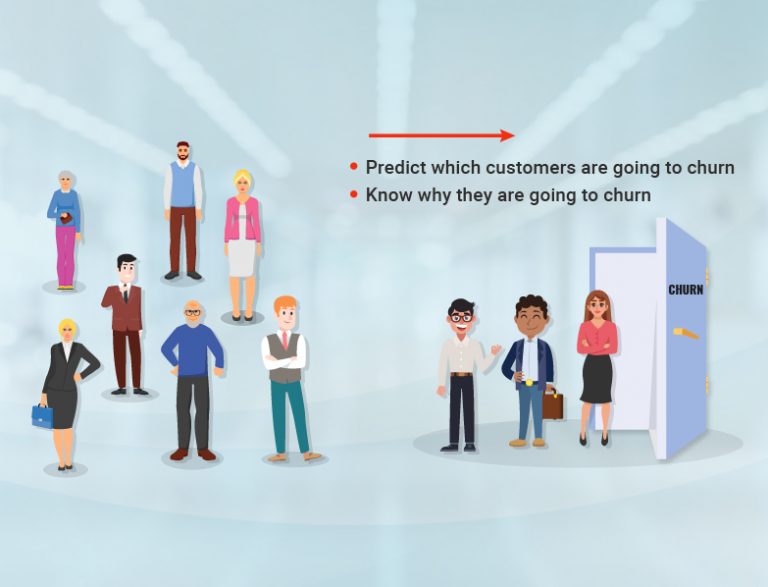Leveraging AI for Customer Churn Prediction – Part 2
In Part 1, we discussed at length about what churn forecasting is, why is it essential for your business, and the challenges in churn forecasting. In this part, we’re going to talk about how ML can enhance customer churn prediction.
While churn prediction offers the knowledge of which customers are going to stop doing business with your brand at present and the reasons behind them leaving, churn forecasting depicts the total number of customers who are most likely to leave in the near future.

Overall, churn rate is an indicator of the health of a business, particularly of businesses dealing with customers who subscribe to its products/services on a recurring basis.
From poor quality products/services to poor customer service and communication, businesses tend to lose customers over numerous little reasons. Also, longtime, loyal customers may start to feel unappreciated as they do not get as many latest offers/discounts as new customers.
Ultimately, customer experience is what defines a brand’s image among customers and influences them to choose it over other brands. If, as a brand, you cannot provide quality products/services or customer support services, even your loyal customers will leave you eventually.
What are the benefits of customer churn prediction?
Customer churn prediction has several benefits, such as:
- Retain the loyalty of customers: By knowing which customers are most likely to leave, companies can create customized marketing strategies for individual customers, thereby retaining their loyalty.
- Get the business back on track: By identifying the root causes of customer churn, brands can rethink and rebuild their product/service, marketing, and acquisition strategies.
- Boost profits: Acquiring new customers is usually very expensive. However, by selling to existing customers, you can boost profits significantly.
- Avert Loss: Customer churn leads to substantial losses. Hence, churn prediction allows businesses to avoid losses by retaining more existing customers through innovative business strategies.
Using ML to identify at-risk customers
Unlike traditional customer churn prediction models, ML techniques deliver accurate prediction rates and results.
Machine Learning focuses on creating advanced systems that are not only able to uncover the hidden insights from customer data but can also learn through the experience without being explicitly programmed for it. As for customer churn prediction, ML systems can learn more about customers from their behavioral patterns that hint at their likelihood of churning.
For instance, ML algorithms can be trained to understand the behavior patterns of customers who have already stopped doing business with a company. Then these algorithms can be used to monitor the behavior of the present customers for finding correlations between their behavior and those of the customers that have already left. In this way, they can identify the customers that are more likely to leave any time soon.
For companies to successfully identify the behavior patterns of potential churn customers, segment them, and predict customer churn, they must continually gather customer data. Since these companies have a consistent record of customer data, they can use AI Predictive Analytics that employs a combination of statistical and Machine Learning techniques to analyze historical data.
Role of Prescriptive Analytics
While tracking and monitoring the present churn rate is constrained to a limited horizon (the present), the Prescriptive Analytics with Machine Learning can offer insights into the future. By identifying the possible reasons of churn for every customer, marketers can better understand their pain points and customize their retention strategy in a way that each customer is targeted.
Prescriptive Analytics employs both statistical optimization and simulation techniques with data and constraints to determine which course of action is responsible for a customer’s high likelihood of quitting. This helpsmarketers to identify which offer/discounts are best for which customer, what actions will help retain the predicted churn customers, and so on.
To conclude, companies that invest in improving the customer experience by continually monitor how their customers interact with their brand and resolving their issues promptly, have the best shot at maintaining long-term relationships with their customers.
 1-888-661-8967
1-888-661-8967

